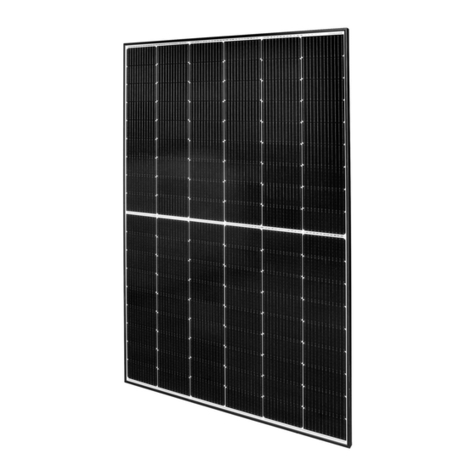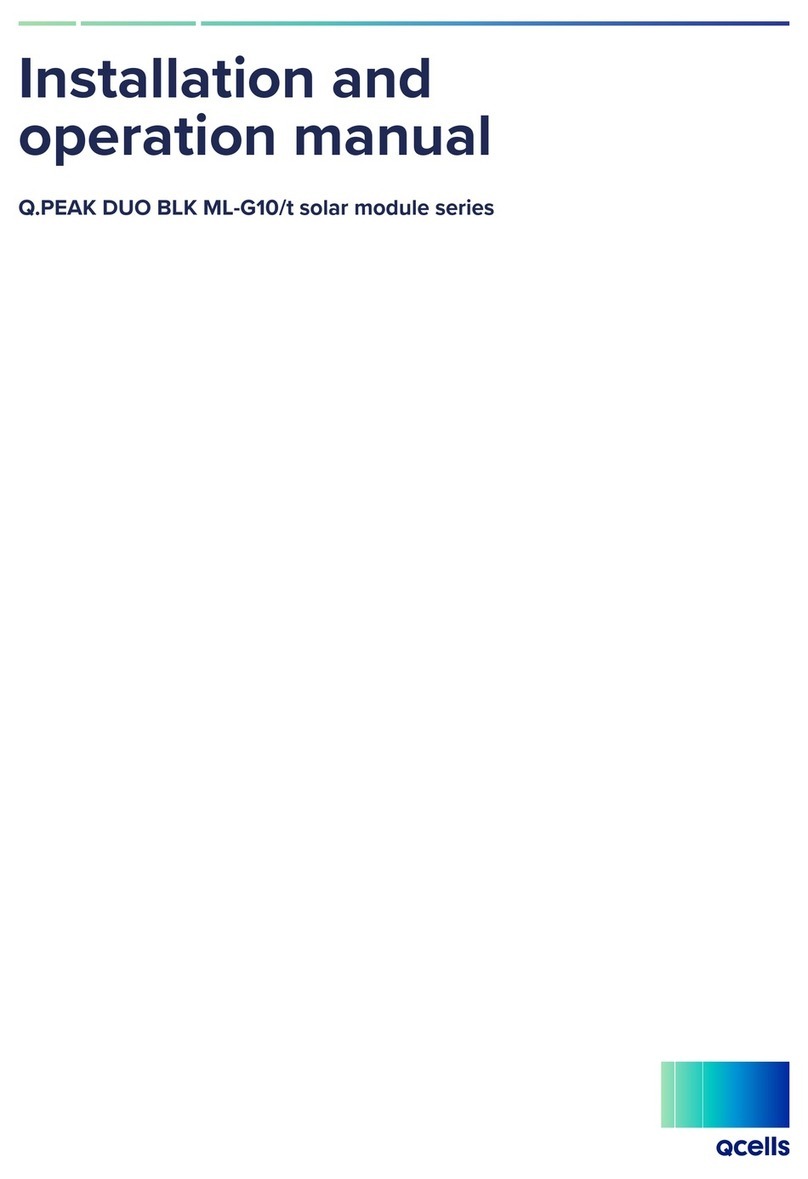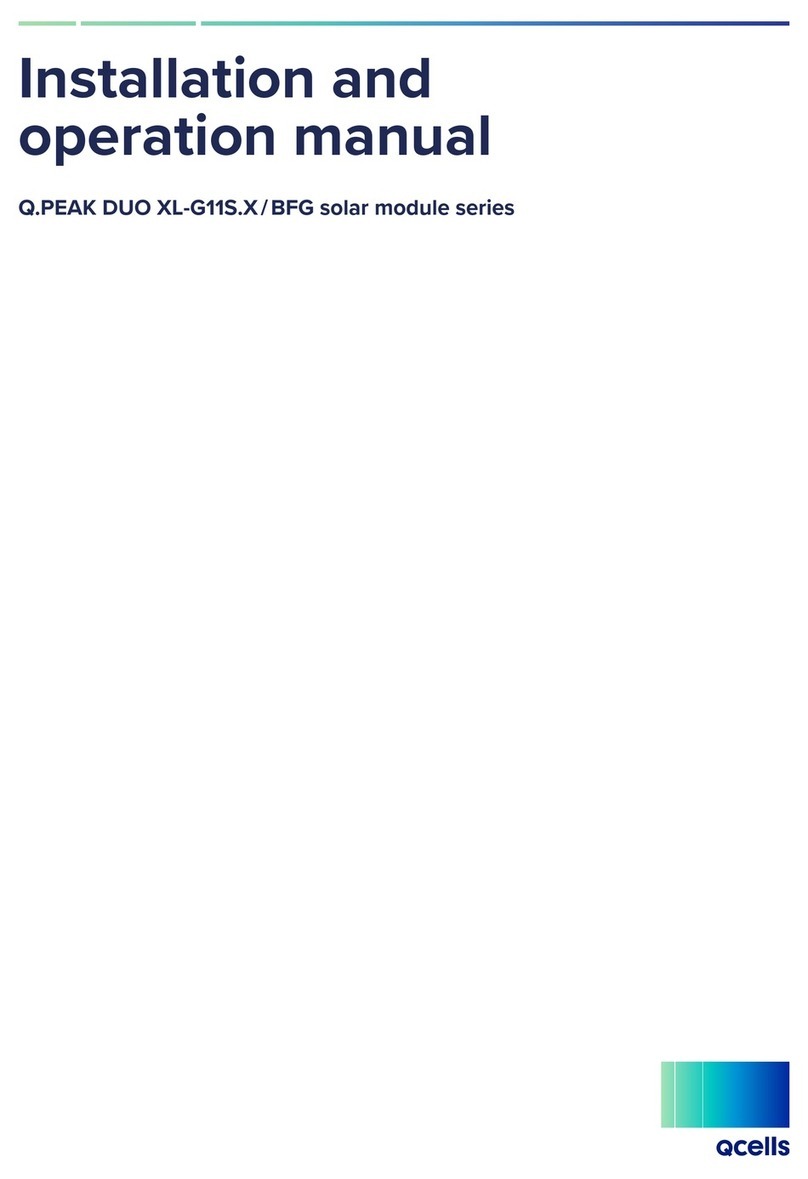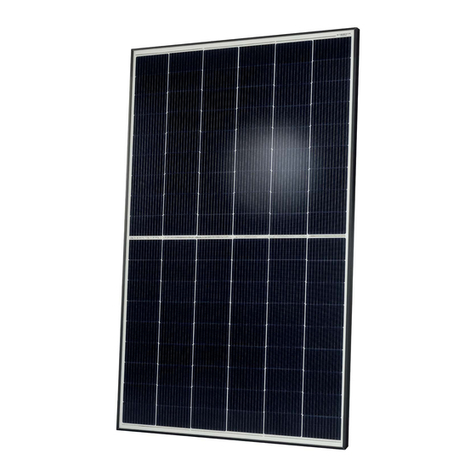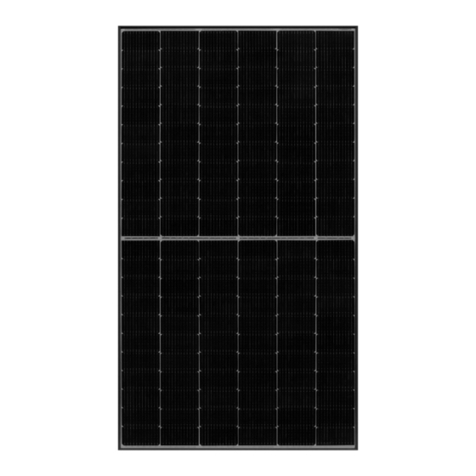
3
1 INTRODUCTION
Information for operators
Please don’t forget to register your photovoltaic installation
at Q.CELLS to get the full extended warranty service accord-
ing to our warranty terms. Ask our Technical Customer Serv-
Keep these instructions safe for the entire life of the
module. Particularly observe chapters 3 (Safety instructions),
6 (Troubleshooting) and 7 (cleaning and maintenance).
Please contact your plant supplier for information concern-
ing the formal requirements for solar systems. Please be sure
to learn about directives and permit requirements from the
responsible local authorities and energy providers prior to
installation of the solar plant. You can only ensure econom-
ic success when these requirements have been taken into
account. In your own interest, make sure to acquire the nec-
essary permits from the authorities and contracts with the
energy providers. We recommend that you insure your solar
system against natural hazards (e.g. lightning strike).
Disclaimer
These instructions are only valid for products of the Q-Cells
SE company. Q.CELLS assumes no liability for damage re-
sulting from failure to observe these instructions. Please
note that the wiring and dimensioning of the plant, as well
as the observance of all necessary safety regulations when
laying out and installing the system are the responsibility of
the installer of the plant. These instructions do not provide
a basis for liability of Q-Cells SE. Q-Cells SE is only liable
in the context of contractual agreements or in the context of
accepted guarantees.It assumes no responsibility extending
beyond the functional capability and safety of the modules.
Please also observe the instructions for the other compo-
nents of the solar system. It may be necessary to generate
and evaluate the statics for the entire project. If your ques-
tions are not adequately addressed in these instructions,
please rst contact your system supplier. You can nd more
information at our website www.q-cells.com.
Q.CELLS CIGS solar modules allow you to directly transform
the unlimited energy provided by the sun into environmentally
friendly electrical energy.
In order to be able to completely exploit the full performance
capacity of the Q.CELLS solar modules, please read the follow-
ing instructions carefully. Failure to observe them may result in
bodily injury and property damage.
This manual only applies for installations in Europe. It pro-
vides information on safety precautions to be used during the
handling and installation of Q-Cells SE CIGS solar modules
along with technical instructions to be followed during instal-
lation, mounting, wiring and operation. This manual applies
for the installation of the following modules:
• Q.SMART
• Q.SMART UF
• Q.SMART UF L
of generation G1.3.
Installation, operation and maintenance works on a photo-
voltaic system must be carried out by qualied persons able
to carry out the technical procedures described in this man-
ual, i.e. system, installer and maintenance personnel. If you
do not possess these qualications, you may not carry out
the work described except for cleaning (Chapter 7).
Information for installers
Ensure that the solar system is set up, expanded, modied
and maintained in accordance with the requisite local and
federal laws and regulations, as well as with the generally
recognized electrical and building codes of the country in
which it will be operated.
Hand over the installation and operation manual to the
respective operator of the solar system after installation.
Inform the operator that these instructions are part of the
product and should be kept for the entire useful life of the
solar installation.
Applicable documents
Q.CELLS Application Note: PV*Sol Additional Power Boost
Q.CELLS Application Note: Grounding of Q.SMART Modules
Q.CELLS Clamp list for unframed Q.SMART Modules
Q.CELLS Packaging+Transport CIGS Modules
The documents are available on www.q-cells.com.
INSTALLATION AND OPERATION MANUAL FOR CIGS SOLAR MODULES Q-CELLS SE - EUROPE

